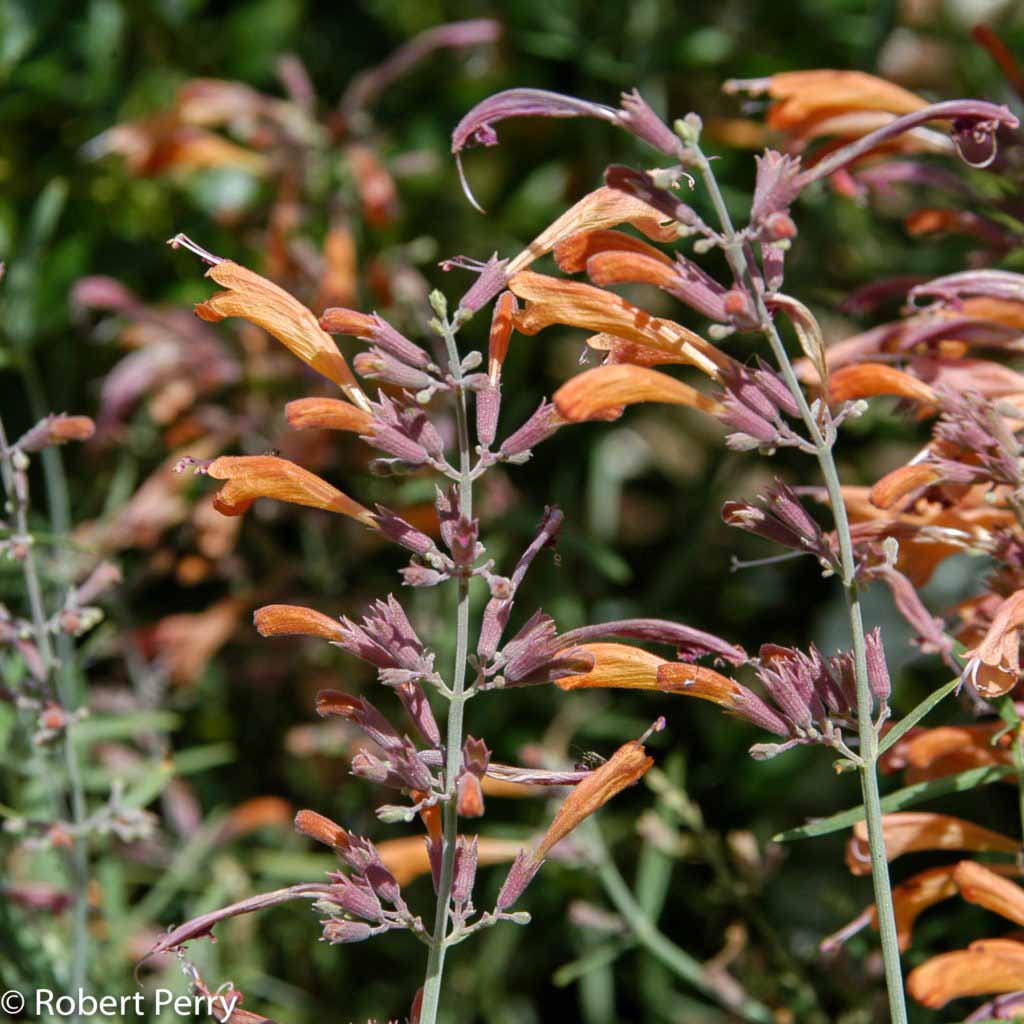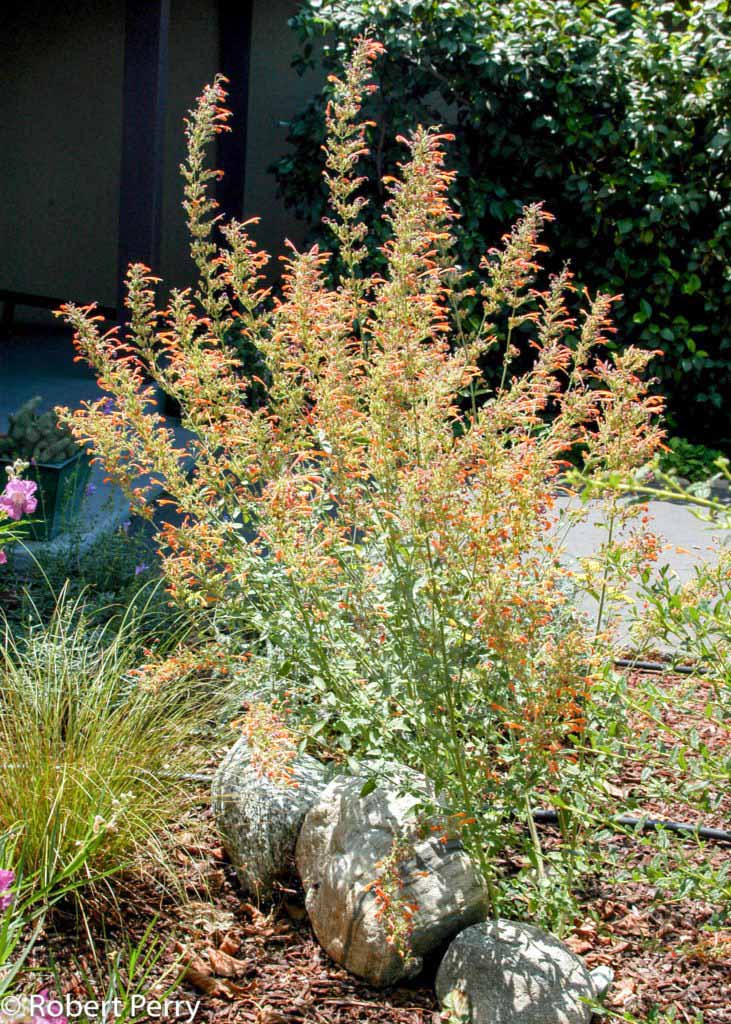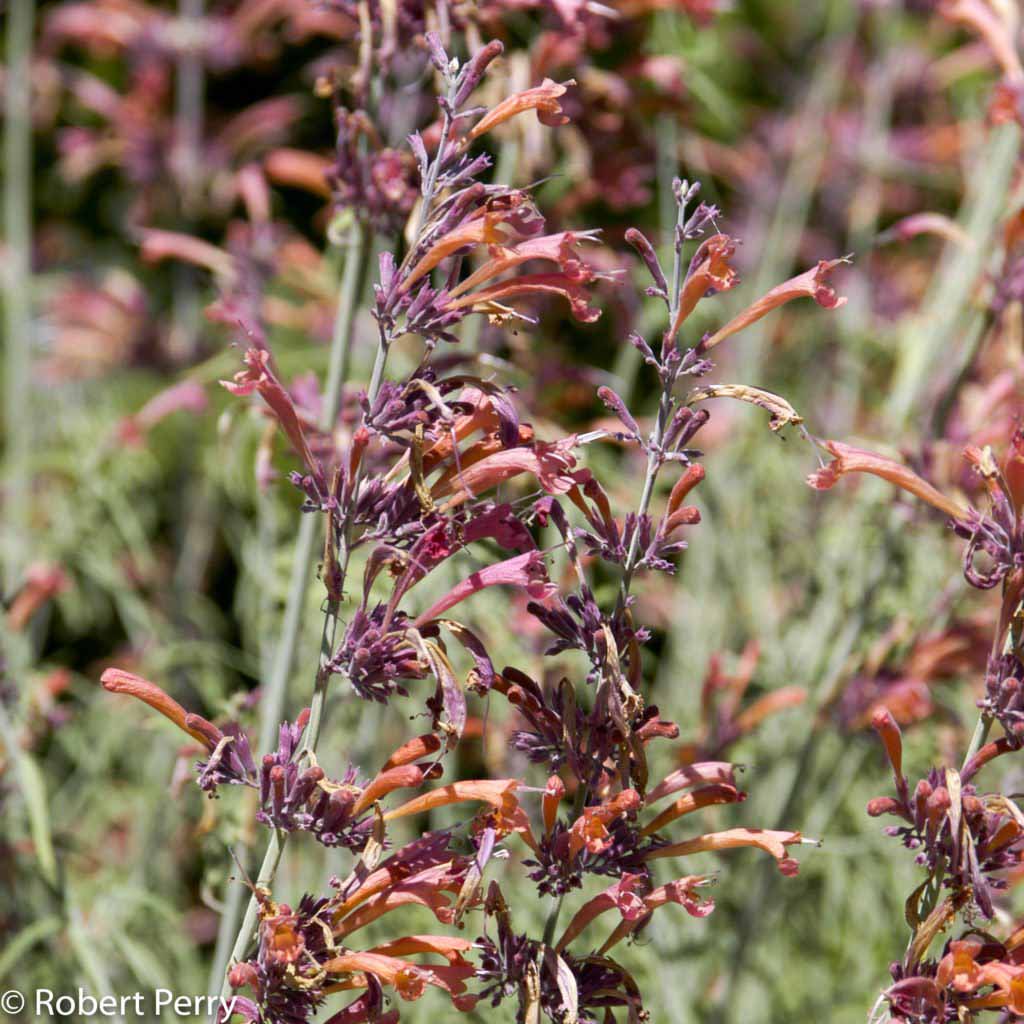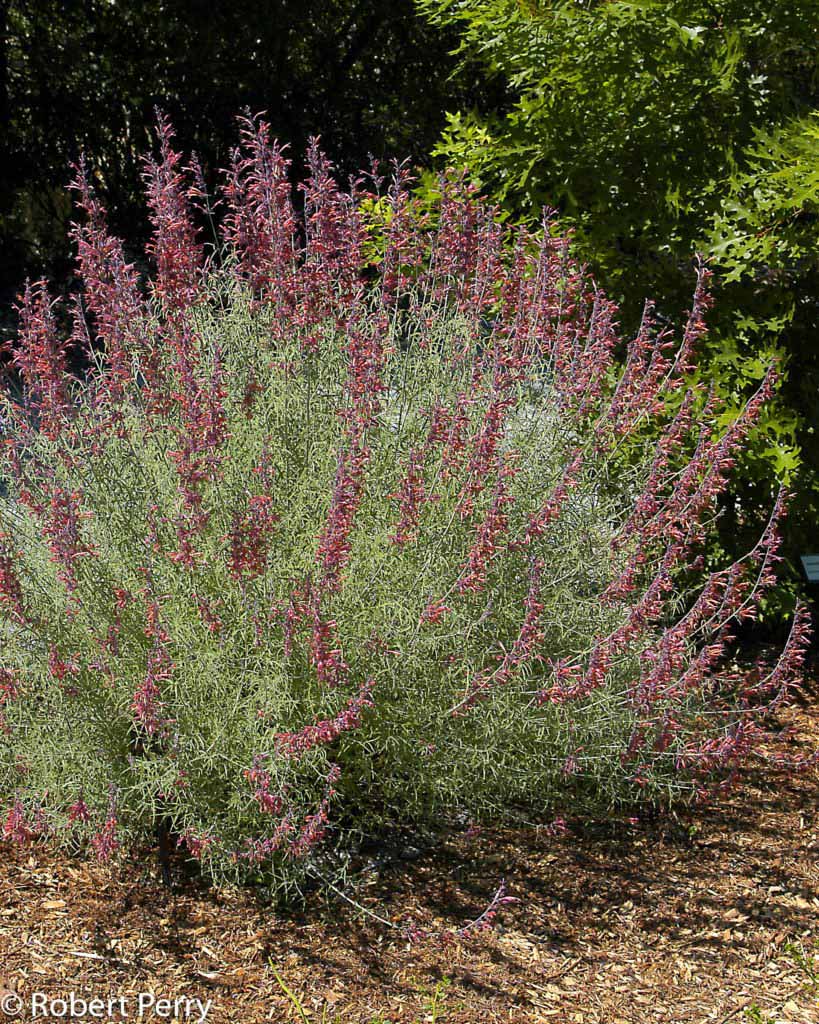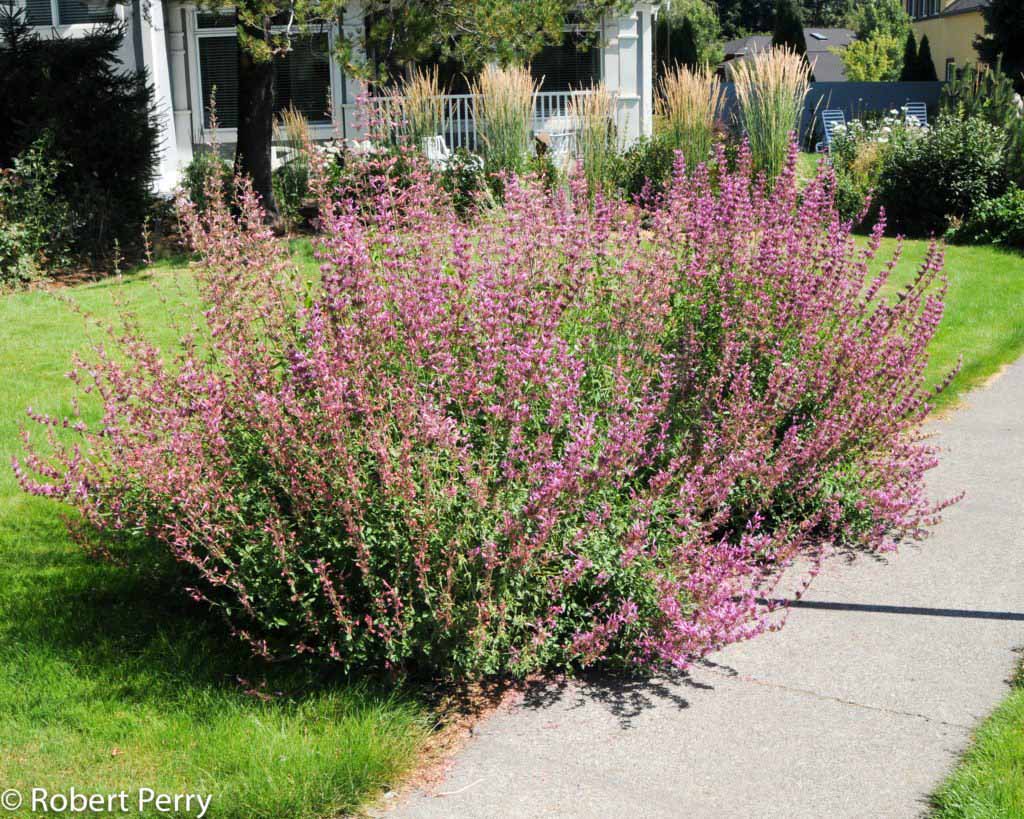Hummingbird mints, or hyssops, are among the premier butterfly attracting plants for Inland Empire gardens. While these are short-lived perennials, their fast growth, colorful and fragrant pink to orange flowers, and nectar for butterflies and hummingbirds is greatly valued during the summer months. Sizes and foliage character varies among species and cultivars, most grow 2-3 ft. tall and have aromatic foliage.
All types of hummingbird mints grow best in sunny locations and in well draining soils with moderate summer water. Trimming in late fall helps maintain good character and for renewed springtime growth. They are popular in mixed perennial plantings as well as southwestern style gardens.
Species and cultivars of hummingbird mint vary from nursery to nursery. Several types that can be found include: A. ‘Tangerine Dreams’, with gray green leaves with an upright habit that grows 2-3 ft. tall. A. barberi ‘Tutti Frutti’, know as pink hyssop, grows to 2 ft. tall and 3-4 ft. wide and has dense spikes of pink flowers. A. rupestris ‘Apache Sunset’, grows upright 2-3 ft. tall and 3-4 ft. wide with blended maroon and orange flowers.
